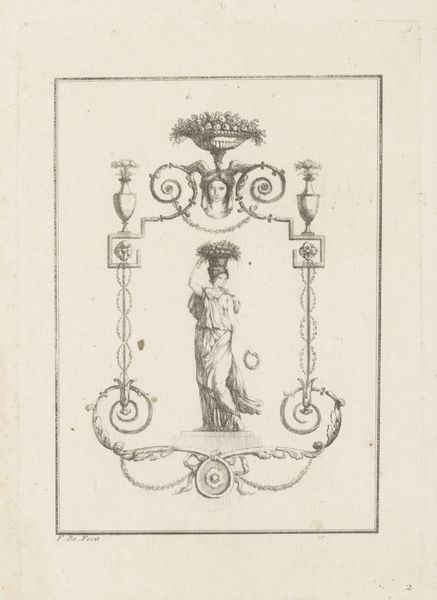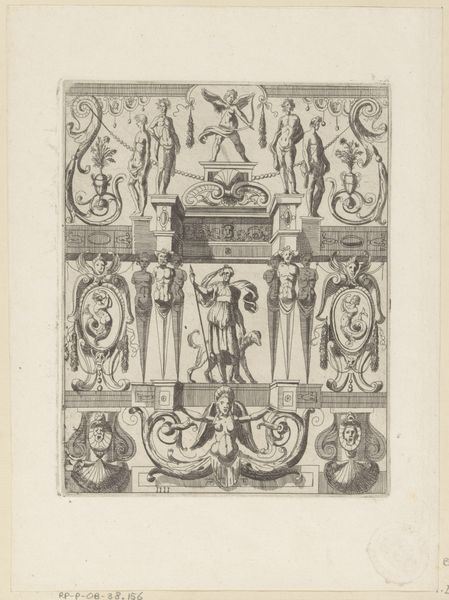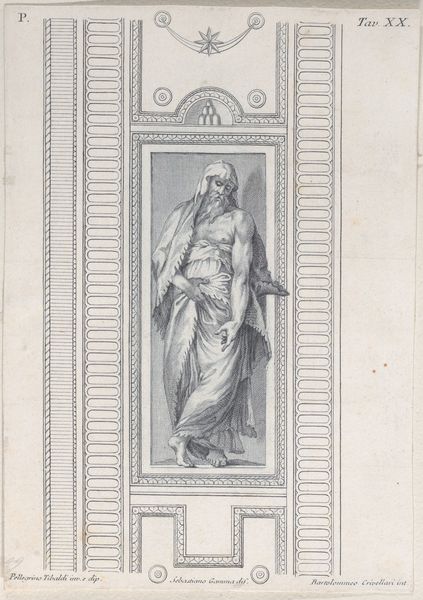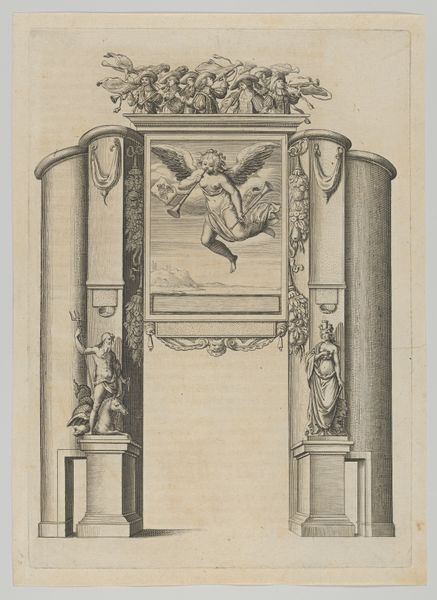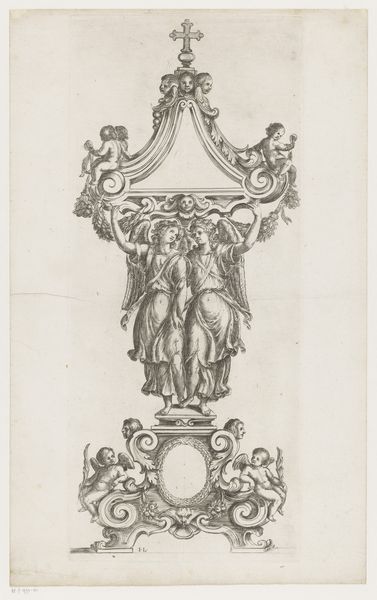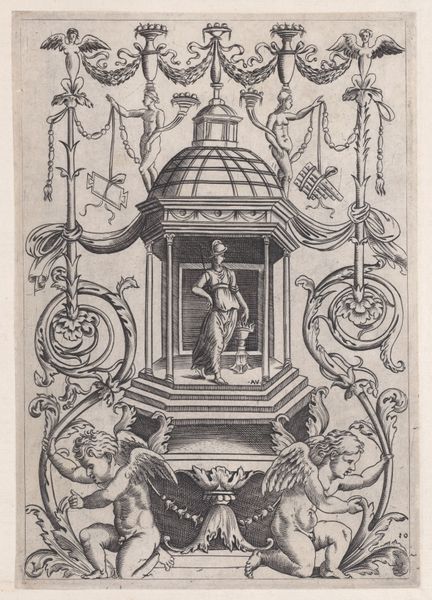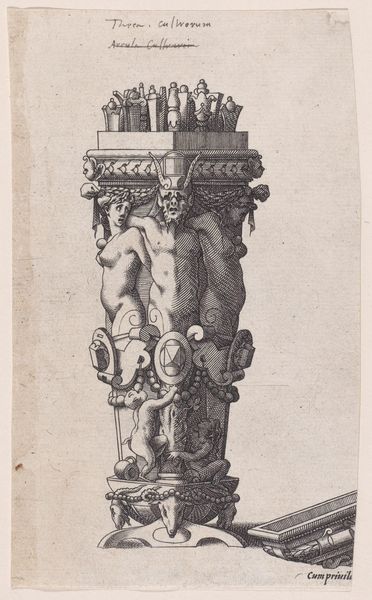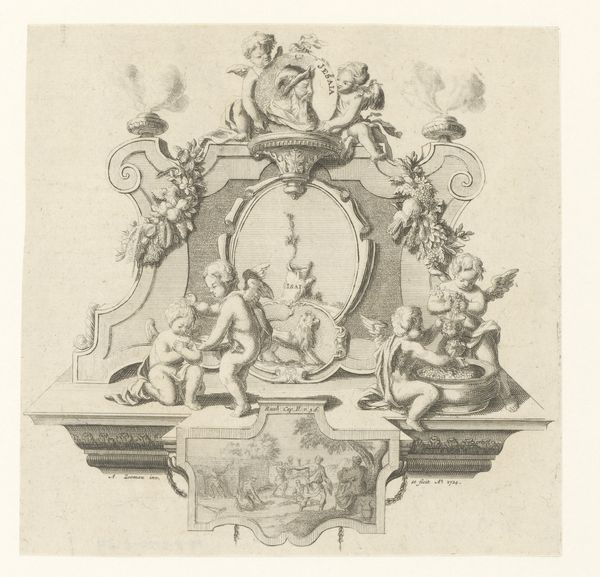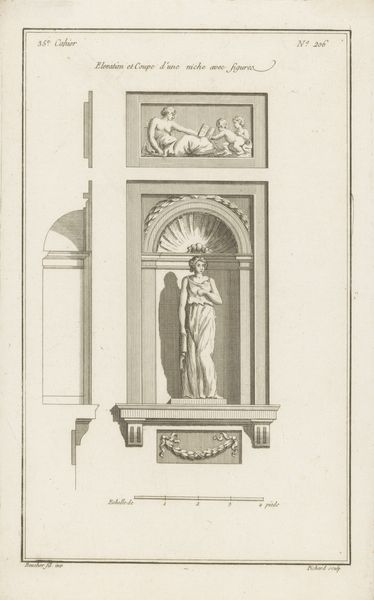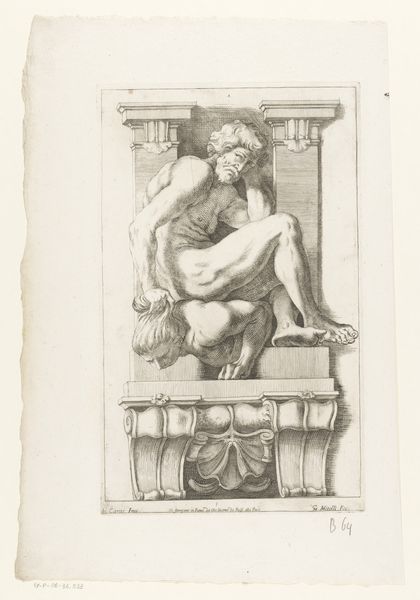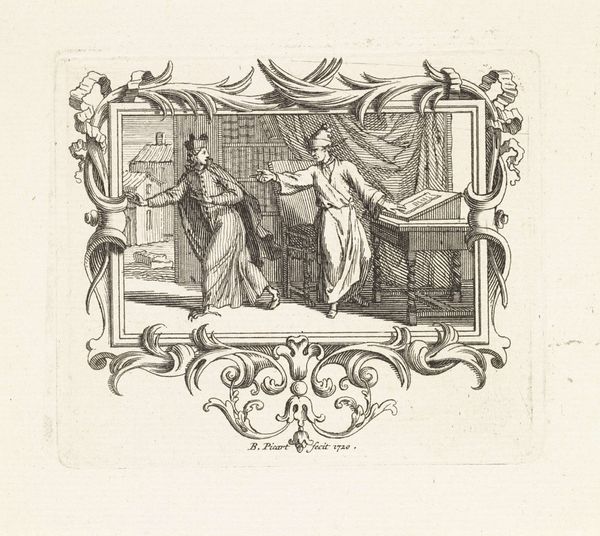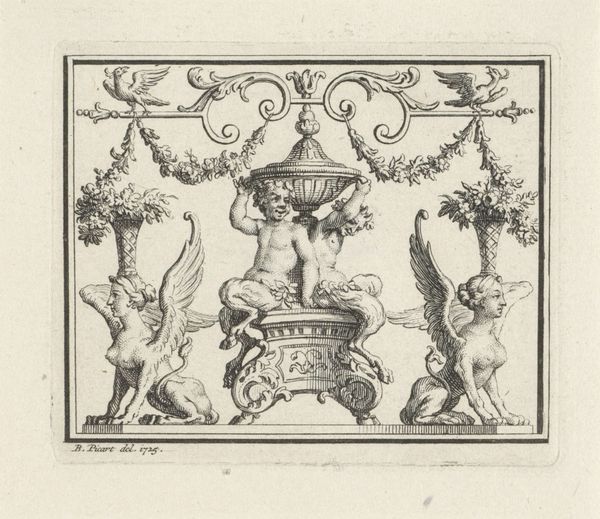
print, sculpture, engraving
#
neoclacissism
#
allegory
# print
#
old engraving style
#
classical-realism
#
figuration
#
classicism
#
sculpture
#
history-painting
#
engraving
Dimensions: height 147 mm, width 121 mm
Copyright: Rijks Museum: Open Domain
Curator: What a curious piece! This engraving is called "Voetstuk met Bacchus," or "Pedestal with Bacchus," and it was created by Nicolas Xavier Willemin sometime between 1775 and 1797. Editor: My first thought is, wow, that's a lot of meticulously rendered stonework! All those decorative elements – the rams' heads, the sphinxes – they speak to the engraver’s skill. What kind of statement were they trying to make here? Curator: Well, it's firmly in the Neoclassical style. Looking at the means of production tells us a lot about the intended audience: engravings like these were often reproduced to circulate ideas about design and taste amongst artisans and wealthy consumers. This image, in particular, seems interested in exploring classical antiquity by meticulously re-creating a scene of what might appear on ancient sculpture. Editor: The figure of Bacchus – his draping and almost defiant pose, suggests a deep engagement with classical sculpture but also how cultural elites saw the god of wine and fertility during a time that was, culturally, still dominated by the monarchy in many countries. It seems to want to reclaim imagery that can legitimize new modes of identity through this focus on the “classical." Curator: Exactly! And think about the labor involved in creating the engraving itself, meticulously translating the three-dimensional sculpture into a two-dimensional image for wider consumption. Engravings like these played a key role in shaping how people understood and engaged with art from antiquity. These reproducible images facilitated greater appreciation and understanding of form across classes. Editor: You are absolutely correct! Now the way this Bacchus occupies the very same stage in the wake of a brewing democratic political fervor brings in themes around individual identity and even a potential shift from old aristocratic forms of representing social identity. It creates new space for the viewer. The emphasis isn't on grand dynastic narratives, but intimate moments of claiming individual or community identity through engagement. Curator: A fascinating interplay between the macro of its socio-historical impact and the micro of the printmaking itself, how the image became accessible is of real interest. Editor: Yes. By understanding art's position, accessibility and production, we reveal not only artistry and intent but the complex cultural forces at play behind any lasting movement!
Comments
No comments
Be the first to comment and join the conversation on the ultimate creative platform.
